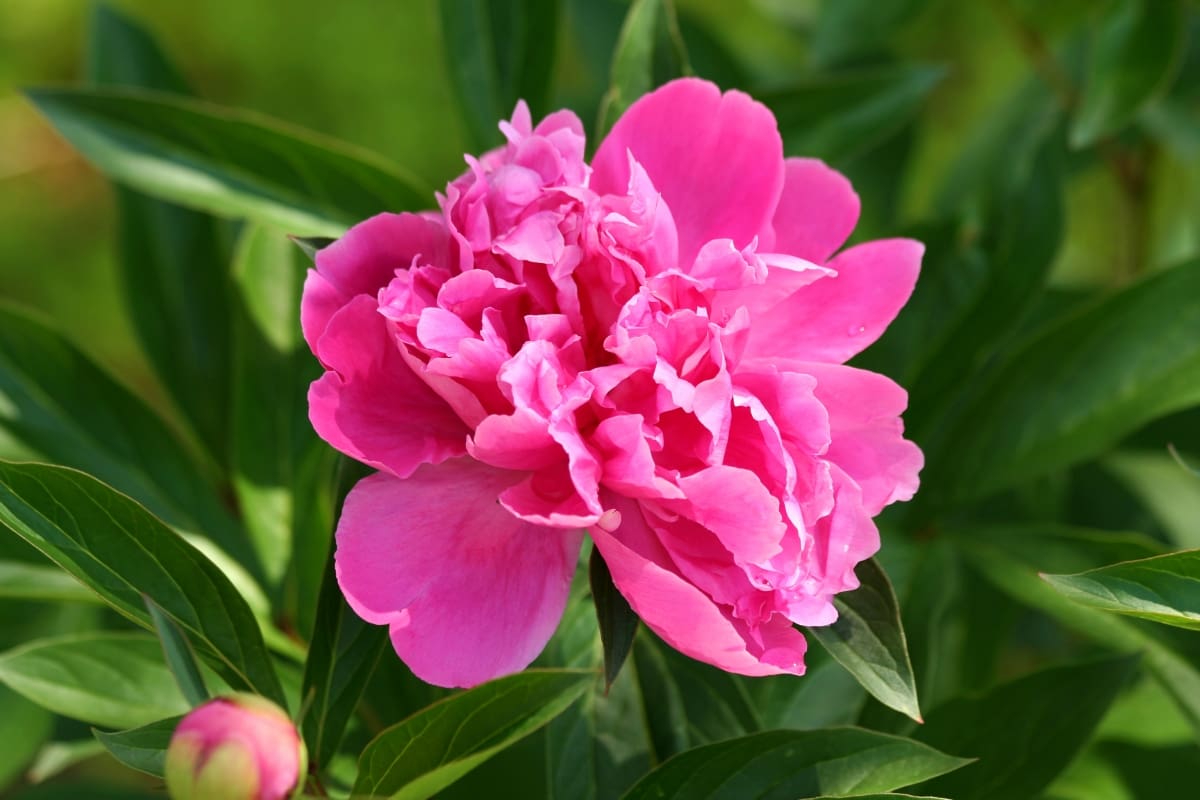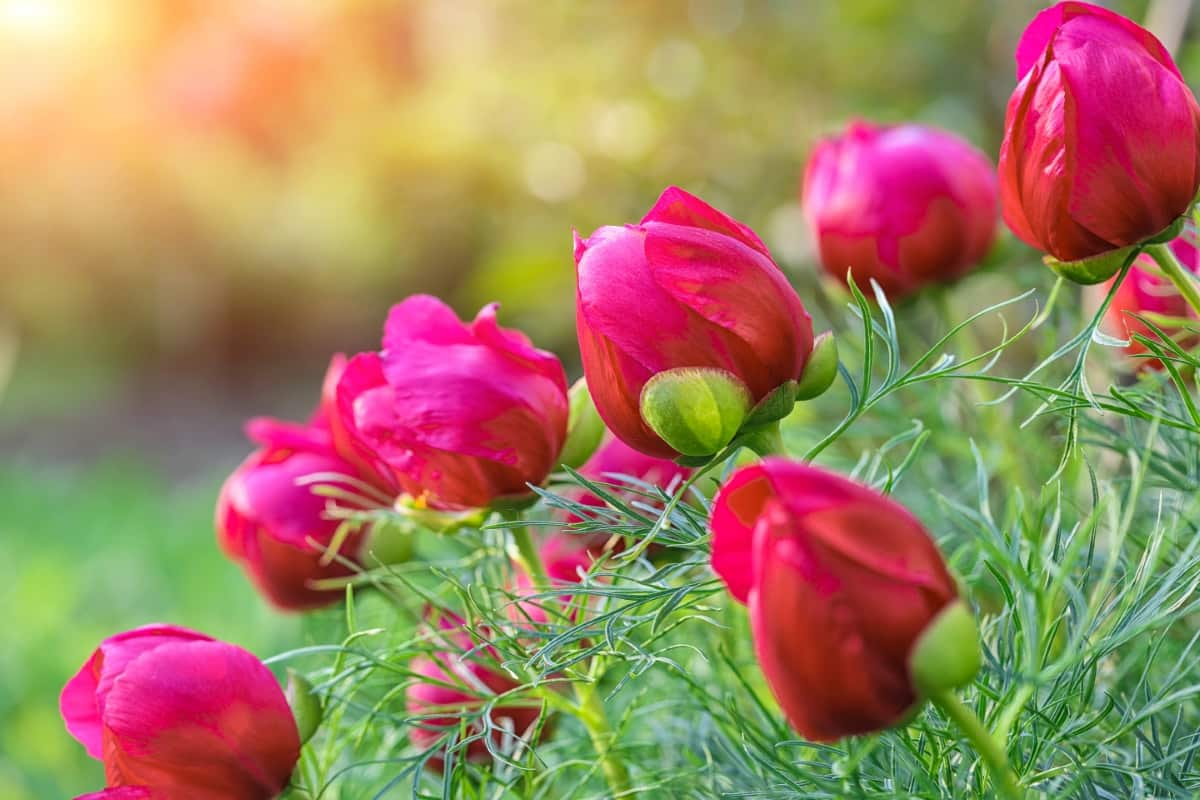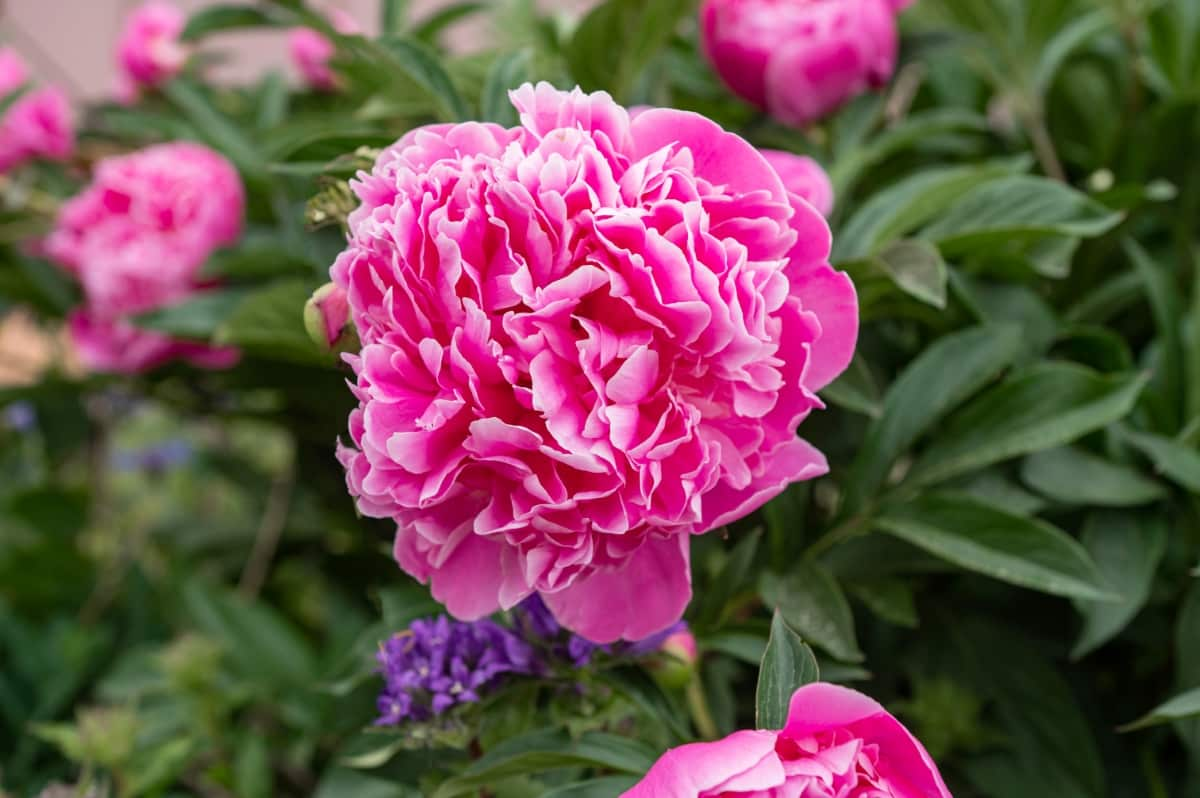Peonies are magnificent, lush blooms that add a touch of grandeur to any garden, but like all plants, they are not immune to the threats posed by various pests. This article will delve into practical strategies for controlling peony pests using natural and organic treatments that prioritize environmental safety while ensuring the health of your peonies.

How to Control Peony Pests Naturally
What is a Peony?
Peonies are decorative flowering plants cultivated mainly for their exquisite and frequently scented flowers. Their luxuriant, bright, and eye-catching blossoms make them attractive in gardens and landscapes. Peonies are available in various forms and colors, with herbaceous and tree variants being the most common.Peonies are planted primarily for their beauty and horticultural value rather than for food or profit. Due to their striking and long-lasting blossoms, peonies are a well-liked addition to floral arrangements, attractive landscaping, and gardens.
Characteristics of Peony
- Known for their large, showy, fragrant flowers in various colors.
- Provides lush foliage with dark green, glossy leaves that remain green and healthy throughout the growing season.
- Known for their longevity, some can live for several decades.
- Come in various forms like herbaceous, tree, and intersectional peonies, each with unique growth habits and flower characteristics.
- Known for their delightful fragrance, varying from mild and sweet to savory and spicy.
Understanding Peony Pests: Identifying Common Pests and Their Damage
Before implementing effective peony pest control methods, it’s vital to acquaint yourself with the types of pests that can afflict these gorgeous flowers and the damage they can inflict
- Aphids: These small, soft-bodied insects feed on peony leaves, causing curling, distortion, and discoloration.
- Japanese Beetles: These iridescent pests consume peony foliage, creating irregular holes and skeletonization.
- Botrytis Blight: A fungal disease that can lead to wilting, browning, and decay of peony petals.
- Nematodes: Microscopic worms that attack peony roots, hindering their growth and vigor.
- Peony Leafhoppers: These insects suck sap from peony plants, causing stippling and reduced vigor.
- Mealybugs: Small, white, waxy insects that feed on peony sap and excrete honeydew, leading to leaf drop and branch dieback.
Prevention is Key: Implementing Effective Strategies to Control Peony Pests
- Choose Resistant Varieties: Research and select peony varieties resistant to specific pests.
- Plant in the Right Location: Ensure your peonies receive adequate sunlight, well-drained soil, and appropriate spacing to prevent fungal diseases.
- Proper Pruning: Regularly remove spent blooms and damaged or diseased foliage to promote air circulation.
- Regular Inspection: Stay vigilant for signs of pest activity or damage, such as chewed leaves, stippling, or wilting flowers.
In case you missed it: How to Control Violet Pests Naturally: How to Get Rid of Them with Natural and Organic Treatment

Natural Remedies for Peony Pest Control: Utilizing the Power of Companion Planting
Companion planting offers a natural and effective method to control peony pests. By planting specific flowers and herbs alongside your peonies, you can deter or distract pests while attracting beneficial insects.
- Chrysanthemums: These flowers can deter Japanese beetles and other insects when planted near peonies.
- Garlic: Planting garlic cloves around peonies can deter aphids and other pests.
- Nasturtiums: These colorful blooms can attract aphids and caterpillars, diverting them from your peonies.
- Oregano: This aromatic herb can repel various problems when planted near peonies.
Organic Treatments for Peony Pests: Utilizing Safe and Environmentally Friendly Solutions
- Neem Oil: Neem oil is effective as a natural pesticide on peonies, controlling aphids, mealybugs, and leafhoppers. Mix it with water and a mild soap to create a spray.
- Diatomaceous Earth: This natural substance can deter crawling pests when sprinkled around your peony bed. Its abrasive qualities make it uncomfortable for pests to traverse.
- Beneficial Nematodes: These microscopic organisms can help control nematode populations in your soil. Water them into your peony beds, and they will seek out and parasitize harmful nematodes.
Creating a Healthy Garden Ecosystem: Attracting Beneficial Insects to Combat Peony Pests
- Planting Pollinator-Friendly Flowers: Flowers such as daisies, sunflowers, and zinnias can attract pollinators, which can help control pests.
- Providing Shelter: Beneficial insects require shelter and hiding spots. Consider placing small birdhouses, insect hotels, or natural debris piles in your garden.
Homemade Pest Repellents: DIY Recipes to Deter Peony Pests Naturally
- Garlic Spray: Blend garlic cloves with water and spray it on your peonies to deter aphids and other pests.
- Cayenne Pepper Spray: Mix cayenne pepper with water, strain the mixture, and spray it on your peonies to irritate and repel pests.
- Soap Spray: Mix mild soap with water and spray it on your peonies to deter aphids and other soft-bodied pests.
Physical Barriers and Traps: Physical Methods to Keep Peony Pests at Bay
Another way to prevent or reduce peony pest infestations is to use physical barriers and traps that exclude or capture pests before they reach your plants.
- Row Covers: To protect your peony from flying insects like Japanese beetles, use netting or row coverings. Ensure the surfaces are securely anchored to prevent gaps.
- Sticky Traps: Use yellow sticky traps to attract and capture flying insects like aphids and leafhoppers. Hang these traps near your peonies and replace them when they are complete or dirty.
- Copper Tape: Apply copper tape around the base of your peony stems to deter slugs and snails. The video gives them a mild electric shock, encouraging them to stay away.
In case you missed it: How to Control Carambola Pests Naturally: How to Get Rid of Them with Natural and Organic Treatment

Soil Management Techniques: Enhancing Soil Health to Reduce Peony Pest Infestations
The health of your soil plays a vital role in the health of your peonies. Healthy soil provides adequate nutrients, water, air, and beneficial microorganisms to your plants, making them more resilient to pests and diseases.
- Mulching: Place a layer of organic mulch 2 to 4 inches thick around your peonies. This acts as a barrier against soil-borne pests and helps conserve moisture.
- Composting: Enhance soil fertility and quality by adding compost to your peony beds. Compost also introduces beneficial microorganisms to the soil.
- Crop Rotation: If you have a history of specific pest infestations, consider rotating your peony planting location to prevent the buildup of pests and diseases in the soil.
Proper Watering and Fertilization Practices: Maintaining Vigorous Peonies to Resist Pests
To prevent pests and diseases, your peonies require proper watering and fertilization to maintain their vigor and resistance.
- Deep Watering: Water your peonies thoroughly, especially during dry periods, to establish robust root systems and reduce stress.
- Fertilization: Apply a balanced, slow-release fertilizer in early spring to support growth and flowering. Be clear of overfertilizing since this may cause stress and nutrient imbalances.
Integrated Pest Management (IPM) for Peonies: A Holistic Approach to Pest Control
Integrated Pest Management (IPM) is a comprehensive approach to pest control that combines various methods of prevention, monitoring, and intervention to manage pest populations below damaging levels while minimizing the use of pesticides. Effective pest management techniques are necessary because pests can seriously harm your peony.
Choosing pest-resistant cultivars, establishing disease-free, robust plants, and preserving ideal growing conditions are all part of prevention. Identification of pests and their natural enemies, damage assessment, and assessment of control strategies are all part of monitoring. On the other hand, intervention entails employing techniques like hand-picking, trimming, cleaning, vacuuming, and applying synthetic, botanical, or biological insecticides to bring pest populations down to levels that are not harmful when needed.
Peony Pest and Natural and Organic Treatment Methods
| Pest | Natural/Organic Control Methods |
| Aphids | Spray with a mixture of water and mild soap. Introduce ladybugs or lacewings to prey on aphids |
| Japanese Beetles | Handpick and destroy adult beetles. Use pheromone traps to lure and capture Japanese beetles. |
| Botrytis Blight | Prune and remove affected plant parts. Promote good air circulation by spacing plants. |
| Nematodes | Use beneficial nematodes to control harmful nematodes in the soil. Choose nematode-resistant peony varieties. |
| Peony Leafhoppers | Spray with a mixture of water and mild soap. Attract or release beneficial insects like ladybugs and lacewings. |
| Mealybugs | Prune and dispose of affected plant parts. Release natural predators like ladybugs. |
| Peony Leaf Miners | Prune and dispose of affected leaves. Apply neem oil or insecticidal soap. |
In case you missed it: How to Control Caterpillars on Okra Naturally: How to Get Rid of Them with Natural and Organic Treatment

Frequently Asked Questions on Controlling Peony Pests Naturally
What are Peony Crops, and What are They Used For?
Peony crops refer to the cultivation of peony plants, primarily known for their beautiful and fragrant flowers. They are grown for ornamental purposes in gardens, floral arrangements, and landscaping rather than for food or commercial use.
What Types of Peonies Can I Grow In My Garden?
Peonies come in various forms, such as herbaceous, tree, and intersectional varieties. Herbaceous peonies are the most common and popular choice for home gardens due to their stunning flowers and ease of care.
When Do Peonies Bloom?
Peonies typically bloom in the late spring to early summer, depending on the variety and your location. They are often among the first perennials to bloom in the garden after winter.
Conclusion
Peonies are susceptible to pests, but gardeners can protect them and the environment using organic and natural pest control techniques. These include companion planting, organic treatments, resistant types, and a thriving garden ecosystem. Physical barriers, self-made repellents, and suitable soil management help peonies become more resistant. This integrated pest management method ensures comprehensive, effective insect control, minimizing the negative environmental impact of peony plants.
- Deworming Schedule for Dogs/Puppies: A Beginners Guide
- How to Prevent and Control Parasites in Goats
- Beneficial Insects in Pest Management
- Natural Solutions for Pest Control in Flower Gardens
- Types of Fungicides Used in Agriculture
- Common Issues in the Fruit Development Stage of Pomegranate Farming
- Fruit Development Issues in Papaya: Easy Solutions and Treatment
- Soil-Borne Diseases and How to Protect Your Plants
- Practices to Prevent Disease Spread in the Garden